#i might color that drawing in later i kindof like it
Note
Questioni, whoms art thou? (What does your toon look like?)
👀
Orb Giblets (Imagine I'm looking off to the sky)
If you're talking about ingame, here's what he looks like!

I usually go with the right one bc I think it looks better, but the yellow hypno glasses were apart of the fit for so long (++ they help bring out the yellow) that sometimes I still wear them for fun
Art wise, here's a quick sketch-that-got-out-of-hand of him

I have an older post of the first time I drew him so the styles a bit.. outdated but its colored.
I'll write more about him in the tags as to not make this post longer than needed
#orb giblets#clemart#not putting this in the ttcc tag#nevermind it went in the tag anyways im embarassed#anyways the first time i drew him i didnt really draw his snout bc i didnt understand how to.#the theme with him is graduation bc of the hat so the gown he's wearing is supposed to be a sort of graduation gown. this was mainly just t#match with the hat but also bc i started to pick back up ttcc a lot more when i was closer to graduating hs#he has a little mouse tail as a reminiscence of his old self (used to be a mouse) and also bc i like drawing long tails but have found out#loathe linearting them#ongoing bit that after he graduated he runs a berry review channel on yt but theyre all rotten. all the berries in his basket are rotten an#smell really bad and also he loves to burrow and dig so the gown is torn and dirty at the bottoms and hes not helpful at all to the#resistance. no one invited him . he sees a cog and starts burrowing#also his fingers are claws but i decided to be merciful and give him cartoon physics so he can move them now#also clem funfact the star on the top part of the gown is not a button its just a design with the shirt bc ever since i was young#ive had this weird discomfort of (the texture of) buttons which is also why if you've noticed. i dont draw suits or anything with buttons#felt the need to share just for clarity . scratches my head you probably didnt need to know that#anyways i hope this answered your question ! smile#i might color that drawing in later i kindof like it#clemask
13 notes
·
View notes
Text
Lettering tutoral, kindof
Heya! This one is terribly overdue, but here's to you @glacierkato ! and the request you made in January
Let's do some lettering :)
Disclaimer: I'm not an expert by a long way. I did not even study the right way, but I did discover what works for me... kinda? So I'm more than happy to share my methods :))
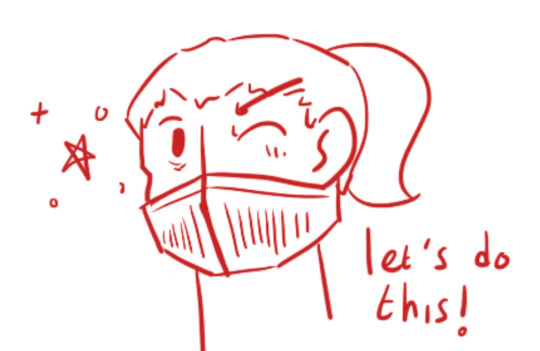
1. Lines
In general lettering is all about lineweight, making it perfect for chumps like me who refuse to learn properly. This will defenetly help improve your understanding of lineweight across all your work. Lineweight is all about using both the thick and the thin lines in your work to make shapes and lines more interesting. Lineweight usually is all about pen pressure. Low pen pressure results in thin lines, high penpressure results in thick lines. There is ofcourse much more than just thick and thin. you can vary in all shapes and sizes by varying pressure.
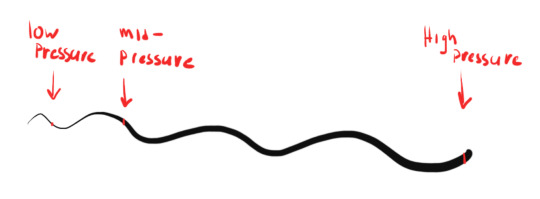
The traditional way of handlettering uses smooth strokes and a variation of up stroke and downstroke to achieve marvelous and elegant shapes and lines.
Up stroke is a thin line, having little pressure on your pen as you move it up.
Downstroke is heavy, putting lots of pressure on the pen as you move it down.

This might sound like a lot of practive to master... and it is. As you can see in my example I barely did it right. You might be familiar with this way of practicing lines over and over. lettering is something you probably practiced in grade school when learning to write cursive. Remember those exersices where you needed to mimic letter shape time and time again to get it consistent? That's the key to learning up stroke and down stroke. I was and still am very bad at those, but you can get fancy practice sheets everywhere nowadays by googeling “lettering practice sheet” You can also easily make your own, Youtube is also filled to the brim with tutorials just search “Handlettering” and off you go!
Keep that practice part in mind if you are really commited to learning lettering. You'll need to practice lots of repetitions. However there are multiple "hacks" to get the same effects without countless hours of practice, ways that don't use up and down stroke to achieve line variation. This is what I use... ‘cus I’m impatient... I'll get to that later
2. Materials
Anything you have.
You don't need expensive materials to start lettering. I started out with one (1) sharpie. Heck you can achieve similar results with sidewalk chalk or even paint. ANY. THING. YOU. HAVE.
Not to say there are not A METRIC TON of different and cool materials availible to try and experiment with!! That's the fun part:) What's cool is now that there is a lettering craze happening, my local dollar store regularly sells cheap knockoffs that are perfect for me to try and mess around with.
I'll discuss a few tools here, or you can skip this section and get down to the nitty gritty.
Pen
Plain, pure and honest pen, pencil,- heck even ballpoint. These all share one thing. You can't vary linethickness with them, but you can mimic thick and thin lines. boom. life: hacked.

Brush pens / dip pens: The traditional art way of getting the pen pressure thing
drawing tablet: Uses settings to calculate your en pressure, use a brush that eables pen pressure and boom, you got yourself a digital brush.
WHAAAAAT? Yes you can absolutely use the lineweight on your drawing tablet to practice and create up-and downstroke. Bonus is you can download any effect in a brush format. con is... you need to learn to control your tablet and that takes practice and time...
Chisel tipped pens: Fancier dudes for cool lettering effects. Has a flat edge and when you turn the brush you’ll get thick and thin strokes.
As for inks, anything and everything. Go digital, use fountain pen inks, indian ink, alcohol markers, water color, anything your heart desires <3

3. Methods
handlettering
Basically you apply the correct forms here, study the type of letters (or font) you want to letter and practice the correct form, using those up- and down strokes to vary lineweight. I used red lines below to indicate me trying to figure out the movement of the strokes in this type. Again there are loads of tutorials availible on youtube, just search “handlettering tutorial” and off you go! I was in a rush and did not practice nearly enough hahaha
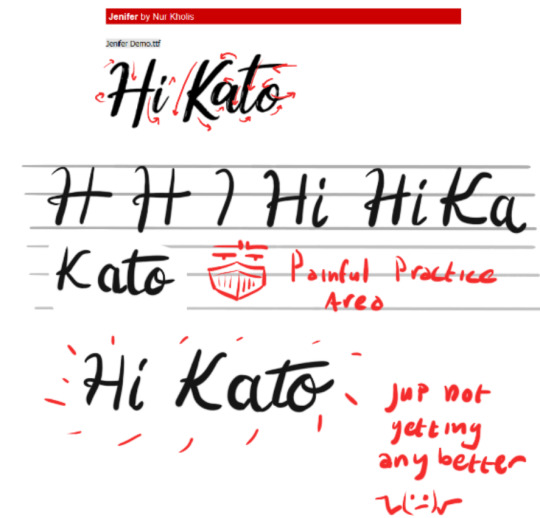
faux lettering
Here’s my “fake it ‘till you make it” trick. Do I look like someone who has the patience to learn lettering?? .... well...maybe? But I didn’t, that’s the point! I don’t know why, but I never had enough attention to learn the classic forms of drawing... uuh oops?
You basically use the sketch and fill method and copy the pretty forms that your heart demands so. Like this:

4. Embelishments
My favorite part. Some of you may know I'm a goblin when it comes down to adding little petty details, my eyes see shineys and I gotta draw them, so I like this part most >:)
Here reference is key as well. I love taking inspiration from illuminated manuscripts or look up plants and stuff. And then I just add ‘em >:)
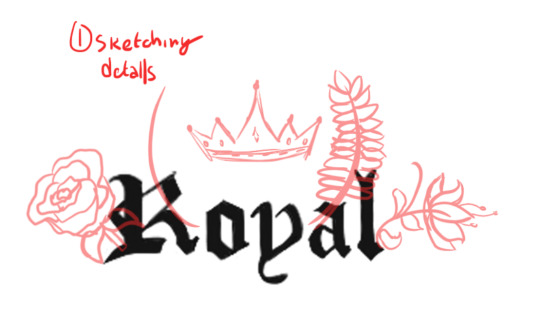
After sketching, color add details, rinse and repeat untill satisfied or frustrated
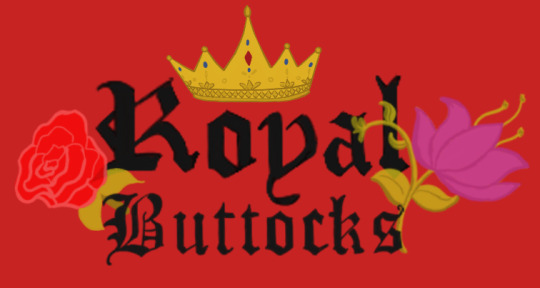
5. Reference Material and Link List
So here's my linklist of reference I use when lettering. I have a whole pinterest board with collected works from which I draw inspiration
Font inspiration: https://nl.pinterest.com/a3811/inspiration/typography/
Pattern inspiration: https://nl.pinterest.com/a3811/inspiration/tatoos-and-patterns/
DaFont.com or any other font site like fontsquirrel or 10001fonts for inspiration and complete fonts to use, sorted by type and appearance and usually with an input box to geneerate sample text. Perfect for inspiration and practice.
That’s it! Hope this helps someone. Message me if you want me to go into detail on something. I tried to keep this brief.
6. Bonus step: Shitpost. Thanks for reading!
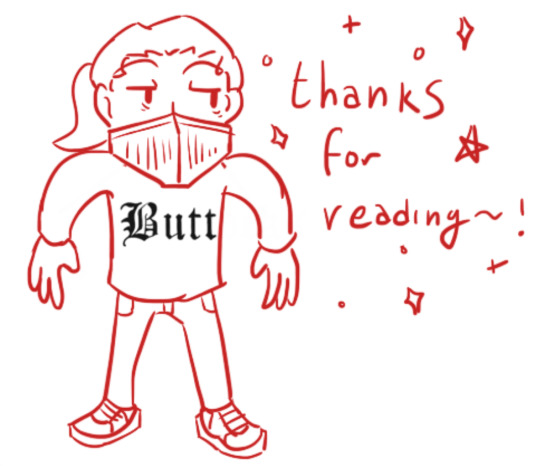
#tutorial#handlettering#lettering#artists on tumblr#myart#art is hard#dailydoodleswithkane#Glacierkato
5 notes
·
View notes
Text
Journal #2a: How Am I & Cultural Competency
How am I doing? How am I doing!!? Well! I am doing well? I don’t know! But for all intensive purposes yes, I am doing well. Actually, yes, I am doing well. I am coming close to 4 weeks in India, and I think I am ready to say that I am possibly now doing well. This is not to say that I have been unwell the last 4 weeks, but I think only now am I starting to recognize bits of myself again that had been lost in a blur until now. I definitely knew it would be challenging to up and move to a new country, but I thought those challenges would be more obvious and clear cut as opposed to feeling slightly uncomfortable all the time. Yikes.
I want to discuss cultural adjustment a little bit. We had an entire lecture on cultural adjustment about two weeks into the term, during which I thought to myself, “This is for close minded people who thought it would be easy to come here. I am open minded and aware, and I am doing amazingly.” And then about three days later culture shock really set in.
Let us begin with an introduction to cultural adjustment. “Culture” is a collection of norms, values, traditions, behaviors, and worldview that people possess. Culture is the acquired understanding and values through which we know how to behave and interpret human interactions. This understanding is gained through living and absorbing the culture. Our dialogue leader emphasized this point over and over again: you cannot truly learn culture from studies. Culture is “learned by doing.”
After defining culture, we established that there is no such thing as “Indian culture.” I mentioned this in another blog entry, but just as you cannot say that there is a true “American culture,” you cannot generalize all of India as having one culture. Here is where two more terms are introduced: stereotypes and generalizations. These are not the same. A stereotype is an assumption that all fit under a certain generalization. For example, all Americans like fast food. Instead of using stereotypes to describe culture, it is appropriate to use some generalizations. A generalization would say that many people in a culture will exhibit certain tendencies. An interesting example of this is the idea of being on time. Our program director always says to us that we should be on time because most Americans value being on time. I would say this is a fair generalization. You could also generalize that for many Indians, being on time is not as crucial and time holds different meanings.
The next idea about understanding culture we discussed was the “Shanti Model for Understanding Culture.” Imagine a tree. The tree has three main parts, the leaves/branches, the trunk, and the roots. This tree represents culture. Bam! Imagine a culture tree in your head, nice and colorful. The leaves are the most visible parts of the tree. They include expressions, behaviors, foods, clothes, etc. Next comes the trunk of the tree. The trunk of the tree represents morality, norms, and values of the culture. Finally are the roots. The roots of the tree are not visible to someone standing and looking at the tree. These roots are where the worldview exists. What you believe to be true, your foundational understanding of life, is at the basis of your tree of culture and often not as obvious to an onlooker. The idea with the metaphor of the tree is that we may be able to look at the leaves and draw conclusions of how the tree expresses itself, but we must dig deeper to understand the values and worldview that are in the trunk of the tree. For me, this visual of the tree is a reminder that the tangible signs of a culture are not a full representation of the culture. We must learn to take time and look closer at the make up of the tree instead of assuming the leaves tell the entire story.
I was also fascinated by the stages of cultural competency. We looked at a flow chart that started at ethno-centricism and ended at ethno-inclusivity. It was interesting because we were talking about it in terms of us as Americans becoming competent to Indian culture, but learning about the stages made me think of so many Americans who also occupy ethno-centric perspectives about people in our own country. Cultural intelligence is not just for travelling abroad, it is for our every day lives as we interact with people who we mark as different than ourselves. The stages of cultural consciousness are as follows (source: Moral Intelligence):
1. Denial
You live in relative isolation from other cultures. You stereotype others. You do not want to recognize that other cultures/ways of life exist. You unconsciously attribute less than human status to outsiders.
2. Polarization
You attach negative evaluations to cultural differences. Your own culture is the standard of correctness and judgment towards others. You feel threatened by other cultures. You want to protect your identity, your privilege.
“This is what’s wrong with these people…”
3. Minimization
You bury cultural differences but recognize top layer of tree differences (behavior, food, dress). You assume that deep down people all hold the same values. Romanticized perspective, “I loved visiting _____, the people and culture were beautiful. I got along with them and had a great time.”
*I would also say that in my opinion, you could think about color blindness in the USA under this category? Like saying, “I don’t see color, race doesn’t matter, we are all humans.” This is problematic because it fails to recognize the cultural differences, and excuses you from truly empathizing and trying to understand someone else’s experience.
4. Acceptance
You enjoy recognizing and exploring cultural differences. You accept the possibility of other ways of thinking. You realize your own behaviors and values might be different, but are not the only good way to think.
5. Adaptation
You can empathize and take in another person’s perspective. You modify your behavior in ways appropriate and to respect other cultures. You shift your cultural frame of reference with a conscious effort.
I found these stages really interesting because they apply to my experience here in India, but also as I said, they offer a framework to think a little more critically about how we interact with those who are different with us in America too. It doesn’t fit perfectly, but it’s something to think about. We also talked about reshaping the way we react to cultural “incidents” of misunderstanding. The basis of this model is the assumption that others are like us (even though they are not). Then, an incident occurs that sparks this reality, “This person is not like me in X way.” This incident gets interpreted in our minds based on past events, experiences, stories, media, and stereotypes that we have collected about the person the incident occurred with. We experience a negative emotion because the incident caused us to be uncomfortable, our status quo and expectations were disrupted, and then our mind forms a judgment towards the person. This judgment reinforces the negative stereotypes that already existed in our mind, and we react with either aggression (yikes) or withdrawal from interactions with the person (or even what they represent to you). The other party is affected by this reaction (either immediately, or imagine the extension of the other party to the group they represent being affected by your prejudice later), and the cycle continues. How can we break this cycle? Well, when an incident occurs and our mind starts to interpret the event, the first step is to become aware of your reaction. What forces are causing your reaction? Are they based in experience, media, stereotypes, fear, confusion? Revisit your emotional reaction and ask yourself how you are feeling. Once you have checked in, let the emotion subside, and observe the situation as a cultural learner.
This sounds really simple in the explanation, and probably obvious, but I really liked the reminder that whenever a situation or “incident” occurs that causes me to have a quick, judgment based reaction, I need to identify my feelings and why I am having them. Then I need to let the feelings go to be able to really take in the situation. My experience and my worldview are simply irrelevant when I am trying to truly listen to someone or learn from their perspective.
I can’t think of any “incident” driven examples, but a kindof broad one is the idea of arranged marriage. We have talked a lot about arranged marriage and how sometimes and for some people it is very harmful and enforces the caste system and gender inequality. We have also talked about how for some people it is dutiful and beautiful. Two of my teachers are married and it was arranged, and the female teacher, Archna Ji, said something along the lines of “How am I supposed to know who is the best for me? My family knows me best and my family can better judge who would be a good match for me.” For some of us, this idea may be upsetting. But I think that as a cultural learner, the next steps would be to ask more about Archna Ji’s experience to really learn and try to understand. The purpose isn’t to come to a conclusion about what is right or wrong, but to understand a way of thinking that is different than your own. This is a big idea I want to take with me forever–– I don’t get to have any opinion on how anyone else should live their life. I will talk about this more later in the context of traditional vs. modern medicine… stay tuned.
PS. Just to gush a little, Archna Ji and Goutam Ji are a match made in heaven. Archna Ji even told me herself the other day on the train to Jaipur that she is so lucky to have such a good partner, she has many friends who not in fulfilling marriages. This is interesting too because I learned that she is glad she had an arranged marriage and believes in its values but doesn’t think it is for everyone. Nothing is black or white! But anyway they are both the sweetest people in the world. I seriously don’t think I have ever met two people who are as kind, thoughtful, or generous in my life. And they are married!?! It’s crazy to me that two people so good have each other. It’s really inspirational I hope that if I ever get married I will have a relationship where we work together so well, care about each other, but also care about others so much. They kind of blow my mind.
Take a moment to consider the culture tree, the stages of cultural consciousness, or the incident cycle example. How do you react to cultural differences? What work do you need to do in how you cope with cultural differences? I found myself slightly alarmed to be at various points on the stages of cultural consciousness spectrum (polarization, minimization, etc.) and all about different topics. I encourage you not to feel discouraged or threatened by these thoughts or realizations and instead to explore where your feelings stem from. I am growing with you each day.
To be continued in Part 2…
0 notes